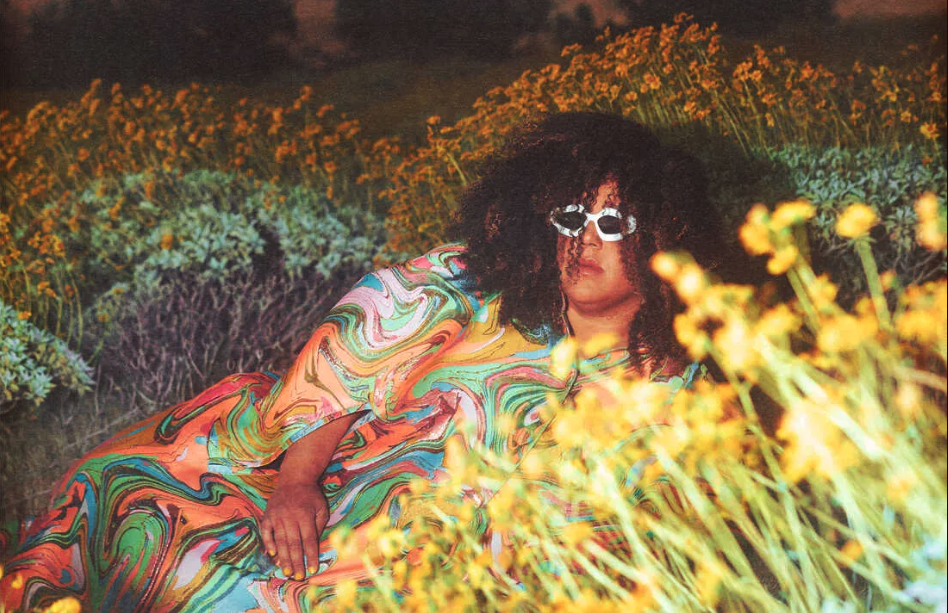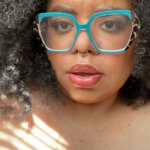Brittany Howard released her second solo album, What Now, last month. After leaving her previous band, Alabama Shakes, in 2018, Howard released her first solo project, Jaime, in 2019. Jaime presented a familiar sound to Howard’s fans, with her signature booming vocals and a bluesy, soulful sound. On What Now, Howard takes more risks, and seems to have a lot of fun in the process.
The album kicks off with the pensive, spatial “Earth Sign.” An ode to finding new love wherever it meets you, the high-hat drums punctuating the song’s emotional core. Toward the end, keys enter in an almost chaotic ensemble. Throughout the song, Howard stretches into her higher register, and stays there until the very end. It’s a beautiful execution and gives the song a heightened sense of urgency.
The next song, “I Don’t,” kind of sails into this very melodic, almost beachy sound brought on by the guitar. It’s a very slow, bluesy rock song that feels like sun-dappled light coming in through a big open window. What becomes clear throughout a listen to this album is that Howard doesn’t stay put in one genre or vocal range—she’s swinging big on this project and knocking it out of the park with each track.
The first single off the album is “What Now,” the third song on the album. “What Now” is funk-laden and punchy, with Howard’s powerful vocals singing, “if you want someone to hate then blame it on me” in the chorus. It’s a bold, unapologetic song, with Howard singing, “I ain’t sorry” again and again toward the tail end of the song. The bassline is so groovy, you won’t be able to stop yourself from moving and singing along during this one.
Howard is credited as songwriter on all the tracks, with a couple of collaborators like Brad Allen Williams on one or two songs. She also plays piano, guitar, keyboard and bass on most of the tracks. Howard is also credited for her production and mixing work on all tracks. It’s safe to say that Howard has a heavy hand in her project and is a jack of all trades when it comes to production.
“Red Flags” is the second single off the album. The drums really introduce us to the mood of the song, kind of tense and brooding. The effect on Howard’s voice during the lead-up to the chorus is almost spooky, but that feeling dissipates when we do reach the chorus, with Howard’s voice stretching into that higher register again. Performing in this vocal space makes the song feel like an emotional roller-coaster ride. As Howard sings, “Don’t let it go, don’t say it’s only love. Don’t let it die, don’t say it’s only love,” we are immersed in some of the central themes of the album: desire, love and the thirst for connection. What Now is also a breakup album, and balances that energy with someone on the precipice of a new relationship.
“Red Flags” is aptly titled, as Howard sings about running “straight through them red flags” throughout. The lyrics here aren’t as punchy as they are in “What Now,” but they are just as heavy with the complexity of queer relationships, romantic or otherwise.
“Red Flags” leads into the delicate and romantic “To Be Still.” The softness in the lyrics and vocals give an almost Minnie Riperton feel. We are grounded in an image of Howard being the flower in the garden while also understanding this meditation on the richness of love. The strength of the images in this song and all over the album is truly a testament to Howard’s song writing skill.
The following track, “Another Day,” is a powerful song about coming together and believing in a better world and future. It’s a fairly brazen song, given the current state of affairs in the U.S., but especially the regressive nature of legislation regarding the queer community that seems to keep passing in red states like Tennessee, where Howard lives. But the song is also super fun to listen to—you can tell the studio sessions for this one were a ride. With lyrics like “I am in love while the world is on fire,” Howard acknowledges bigger global issues, but ultimately circles back to the power of love.
“Another Day” is followed by the third single, “Prove It to You,” which I would describe as Howard’s seductive vocalization over a booming house beat. It’s one of the freshest, most inventive songs on the album, and proof that Howard can play in any genre her heart desires. Her vocals are at their best on this track—you would think that a house beat might drown out her power, but quite the contrary: they are pretty well matched here.
“Prove It to You” is also a song that charts the expansiveness of new love and wanting to prove how much you care for the person you are with. It’s grand and searching, as Howard sings, “Don’t hurt me girl, I can’t take it no more. Makes me ask what I’m doing it for.” I know that we don’t often get music videos from artists anymore, but this track is begging for one. During promo for the release of the song, Howard shared a video of herself playing the track surrounded by desert, and I think the stark contrast of the red sand against her all-black outfit and hair was a perfect visual.
“Samson” brings us to a bluesy, melancholic space with a low, sweet trumpet and keyboard. The song deals with being “split in two,” trying to decide what to do when you’ve been checked out in a relationship and becoming a person that neither you nor your partner recognizes. The trumpet on this track is so gentle, it feels like it comes in at random intervals with this very muted yet floral sound. It’s a perfect “pre-breakup” song, encapsulating that contemplative state that you exist in before deciding whether to stay or leave. The drums at the end are scattered without being frantic—it’s the perfect end to the song as the trumpet fades out.
“Patience” gives a classic R&B feel with an exceptionally twangy guitar on the track. I laughed when I first read the lyrics to this song, because it feels like such a very queer-woman song about not wanting to rush in, but feeling that magnetic pull to say “I love you” right away. Exercising patience at the start of new love is super important, even for lesbians!
The last single on the album was “Power to Undo,” a tender breakup track that starts with the lyrics “I miss the way you used to hold me, like I was holy.” The song is anchored by the repetition of “how could you” before the chorus starts; it paints a clear picture of love, betrayal and the question of forgiveness. Howard plays the guitar on this track, and its fuzzy, static-y feel makes the song stick like a splinter in your head. It’s a commanding song that feels anthemic in its chorus.
I really want to talk about the last track, “Every Color in Blue.” Now, this track is frantic, in the trumpet, the drums, with the piano providing something steady to grip on to. Howard’s vocals are almost operatic here, riding a wave of high to low effortlessly. At first it seemed like an odd place to end an album, but after a few listens, it’s a perfect fit for me. It’s literally a comedown off a high, with “I can’t believe I’m all out of rainbows” being the last lyric uttered.
This release is so adventurous and expansive, it’s one of the albums you’ll need all of your attention for to really appreciate the work that went into it. Howard is reaching new heights with each solo project, and I can’t wait to see what’s next for her.
What Now is available to stream or purchase now.


 Why you can trust Xtra
Why you can trust Xtra


